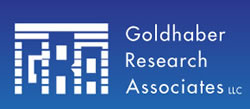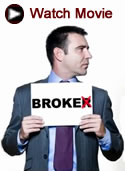Warning labels are an indelible part of our society. Warning labels are everywhere - on our food, on our drinks, on our sweeteners, on our cars, on our tools, on our cigarettes. As consumers we are constantly barraged with multitudes of warnings, cautions, don't do this's, don't do that's. Many product liability lawsuits involve a failure to warn of a hazard on the part of the product manufacturer. Manufacturers often use warnings as a solution to a hazard, instead of removing the hazard from a design.
Using a warning to mitigate a hazard is one of the least desirable methods of hazard control. In product design or redesign if the product is already designed, hazards must be identified, removed from the design of the product, guarded if hazard elimination is not possible, and if these are not possible, the hazard must be identified with a warning of some sort.
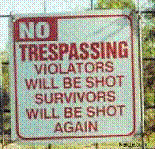
Figure 1: Sample warning sign
This process of design is inferred by the American Society of Mechanical Engineers' (ASME) code of ethics "Engineers shall hold paramount the safety, health and welfare of the public in the performance of their professional duties." This design process is stated explicitly in the National Safety Council's Accident Prevention Manual, and is commonly referred to as the 'hierarchy of design' or the 'safety design hierarchy'. Thomas A. Hunter, in his book Engineering Design for Safety confirms this process.
Written Warnings
Designing and selecting warnings is not a frivolous activity. Many different factors must be analyzed and incorporated into a solution. Every aspect of a warning label must be thought out in a thorough, systematic fashion. Warning labels must fit the following criteria:
- The warning must alert the user of the hazardous condition
- The warning must be understandable
- The warning must communicate the nature of the hazard.
- The warning must contain information on how to avoid the danger which the hazard presents.
- The warning must communicate the consequences of not following the warning's message.
1. The warning must alert the user of the hazardous condition
This is the first criteria of warning design. The warning label must get the attention of the user. The attention-getting value of a warning label is affected by many variables. These variables can include the color, size, and shape of the warning, the location of the warning label on the product, the use of signal words, and other factors.
2. The warning must be understandable
Warnings serve two functions: alert a product user of the existence of a hazard, and to inform the user how to avoid the danger. To inform the user how to avoid the danger involves a message, usually written. The written message must be clear and convincing to maximize the comprehension of the hazard and how to avoid it.
For a written message to be clear, it must be in a language and style familiar to the person reading the warning. This can be a simple process for a product sold in only one country, but is more complicated for manufacturers who are selling their products in different countries with different languages. The warning needs to be understandable by all product users, regardless of their literacy rates. This means keeping the warning short, concise, and simple, using as few words as possible
3. The warning must communicate the nature of the hazard
This element involves communicating what exactly the hazard is, as well as communicating the severity of the hazard. Describing the hazard is important, and is necessary for the user to truly understand OSHA standard 1910.145(e)(2) also calls for the wording of the warning label to "make a positive, rather than a negative, suggestion and should be accurate in fact." Making a positive suggestion means that the warning label should convey to the user what the user should do to avoid the hazard. Making a negative suggestion would be warning what the user should not do to avoid the hazard. Positive warnings spell out what the user should do which increases compliance, instead of having them guess at what they should do from knowing what not to do.
4. The warning must communicate the consequences of not following the warning's message.
This criteria is related to the communication of the level of severity of the hazard. Thanks in part to the litigious times we find ourselves in, people are often over-loaded with warnings. The simplest products now have detailed warnings. Communicating the consequences of not heeding a warning is the most important for warning against severe hazards, hazards that will result in death or severe injury.
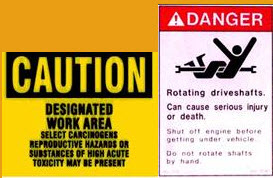
Figure 2: Warnings with consequences
Product users need to know when not following a warning is going to put their life in danger.
Pictograph Warnings
Pictographs can be used to communicate the hazard and how to best avoid the hazard, as well as the consequences of not following the warning. Pictographs are universal, meaning they can be understood by everyone regardless of their language, intellectual ability, or visual acuity. Pictographs can communicate an entire concept. Unlike written statements that must have separate statements for the communication of the hazard, the avoidance of the hazard, and the consequences of the hazard, a pictograph warning can communicate the different elements of a warning statement in one short, concise picture.
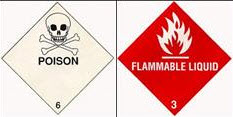
Warning Standards
If a manufacturer is going to sell the product in Europe and the United States, the warnings must meet the ISO 3864-2 and the ANSI Z535.4-2002 standards. The hazard is ranked according to the potential for death or injury. The ranking order is:
1. Danger signifies the highest hazard level and is used to indicate an imminently hazardous situation which, if not avoided, will result in death or serious injury. The signal word is preceded by the safety alert symbol, the exclamation mark. The configuration is shown below.
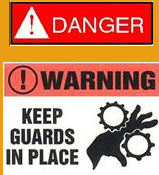
Figure 4: Sample warning label
Warning is used to indicate a potentially hazardous situation which, if not avoided, could result in death or serious injury. The configuration is shown below.

3. Caution is used to indicate a potentially hazardous situation, which, if not avoided, may result in minor or moderate injury, or to alert of unsafe practices.

4. Caution is used without the safety alert symbol for situations that involves property-damage-only hazards.

Products failing to meet the above criteria may be found to be unreasonably dangerous and the manufacturer may be held liable for any injuries. While failing to warn is a big problem, an even bigger problem is companies that use warnings as their preferred method of hazard control. While warnings are necessary in certain situations, it is always preferable to attempt to safeguard a product hazard with guarding or design solutions.










